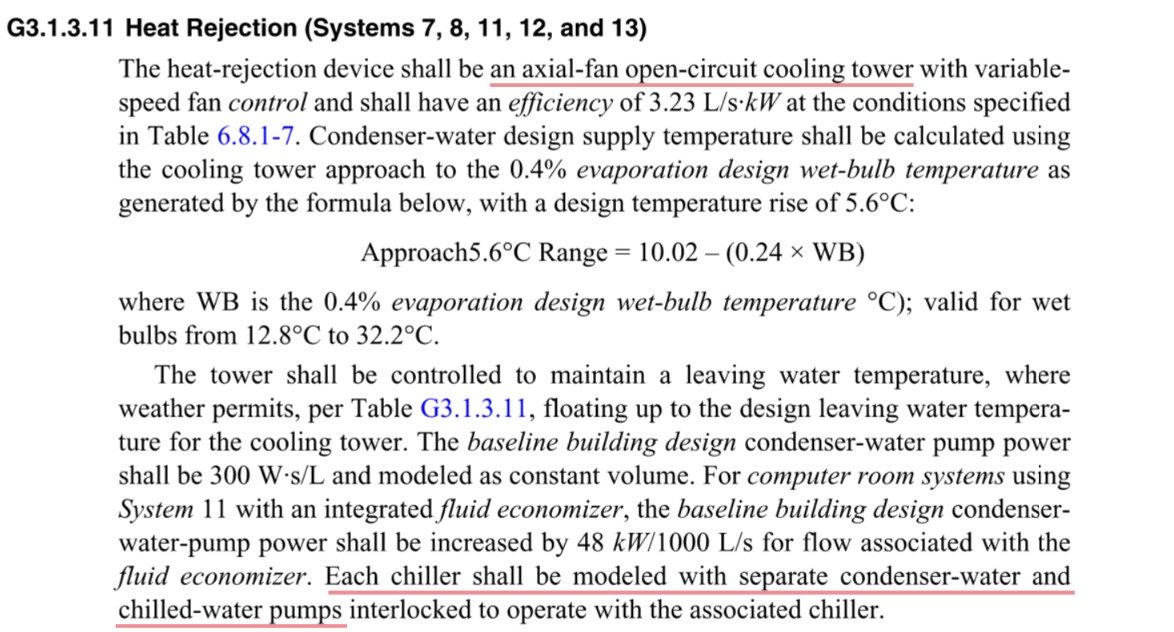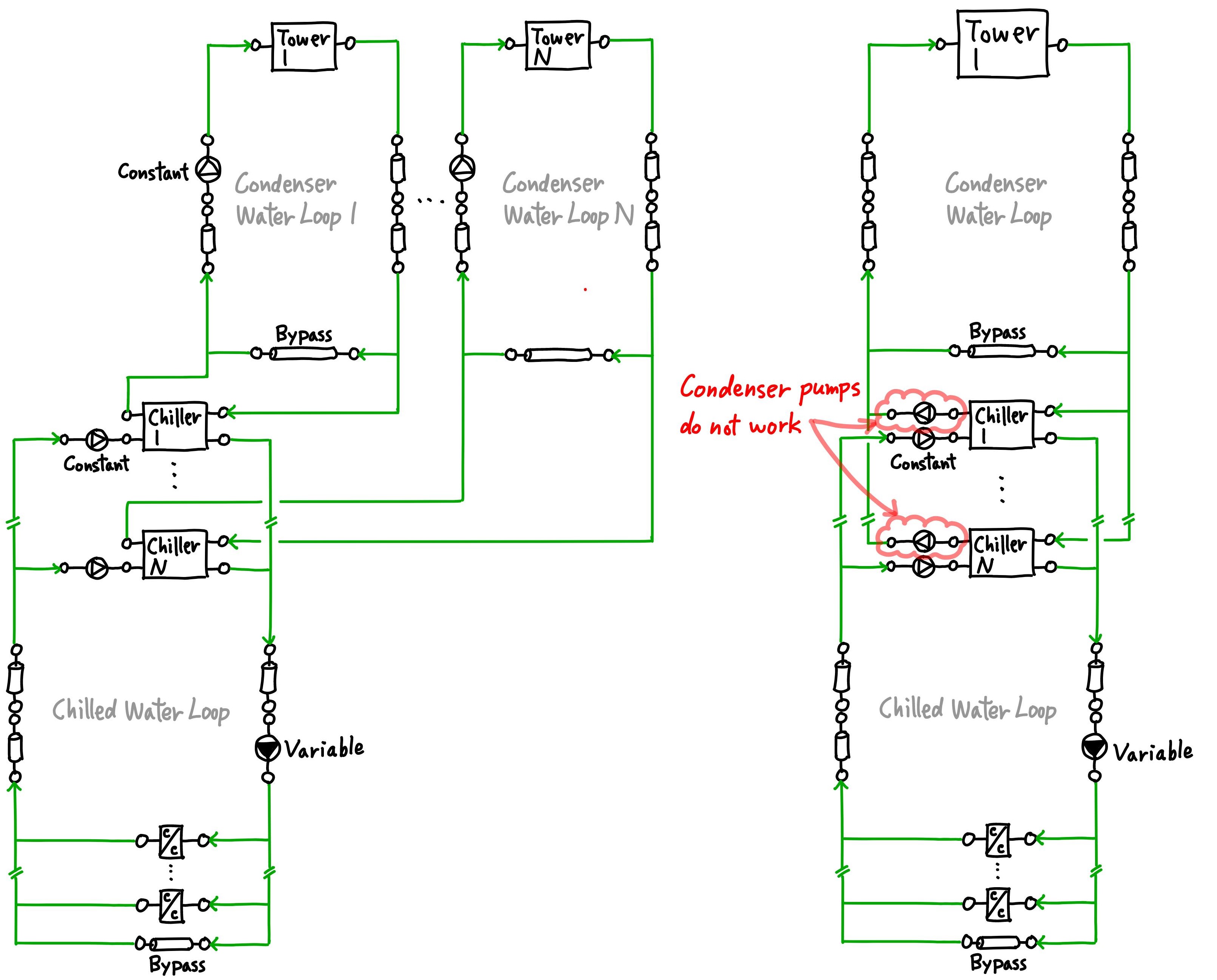Number of Cooling Towers for ASHRAE90.1 Baseline
As per the title. Sorry for asking about a very fundamental requirement of ASHRAE90.1 Appendix G, but I'm not 100% sure. What is the number of cooling towers for the Baseline case?
I have been modeling Tower per Chiller as shown on the left side of the schematic below. If the Baseline case has 10 chillers, it also has 10 cooling towers.
Supporting document: [ANSI/ASHRAE/IES Standard 90.1 Performance Rating Method Reference Manual] (https://www.pnnl.gov/main/publication...)

On the other hand, the original requirement of G3.1.3.11 states that the heat-rejection device shall be an axial-fan open-circuit cooling tower. It also states that each chiller shall be modeled with separate condenser-water pumps. If I interpret these requiremrnts as they are, the schematic would look like the one on the right below.


Which is correct, Tower per Chiller or only one big Tower?
The propbem of the only one big Tower is that the condenser loop shown on the right does not work in EnergyPlus. It seems that EnergyPlus does not allow to model condenser pumps immediately before or after chillers. When I modelled the schematic on the right in EnergyPlus, no warning/severe error about component connection appeared, but there was no water flow on the condenser loop. Condenser pumps and one cooling tower did not work.
SUPPLEMENT
EngineeringReference describes pump placement relus in EnergyPlus.







Based on that description and the diagram in the reference manual I would think you should be able to have a "primary" pump attached to the condenser side of the chiller and a separate branch "secondary" pump serving tower branch loop. Maybe it's a bug?
I'm not sure if I understand your comment correctly. Are the "primary" pumps already shown in my sketch highlighted with the red clouds? Is the "secondary" pump added in the supply inlet branch of the condenser water loop? If that's the case, the primary pumps do not work, and I don't think the secondary pump complies with the pump configuration described in G3.1.3.11.
Your highlighted pumps in red would be the condenser loop primary pumps and you should be able to add a secondary pump to that tower loop. To your original question, it's not clear to me if you have to do it that way or why it doesn't seem to work in the way you've configured it. I would try the following workaround; create a secondary loop pump for the tower and assign all the appendix G pump power allowance.
EnergyPlus cannot model what you suggest because
but
CondenserLoopdoes not have common pipe input field.Moreover, if one big Tower is correct, the point is not finding workaround or makeshift to run the simulation. EnergyPlus is one of the authorized energy simulation programs. It must be capable of modelling ASHRAE90.1 Baseline case accurately.
Posted issue as https://github.com/NREL/EnergyPlus/issues/10017